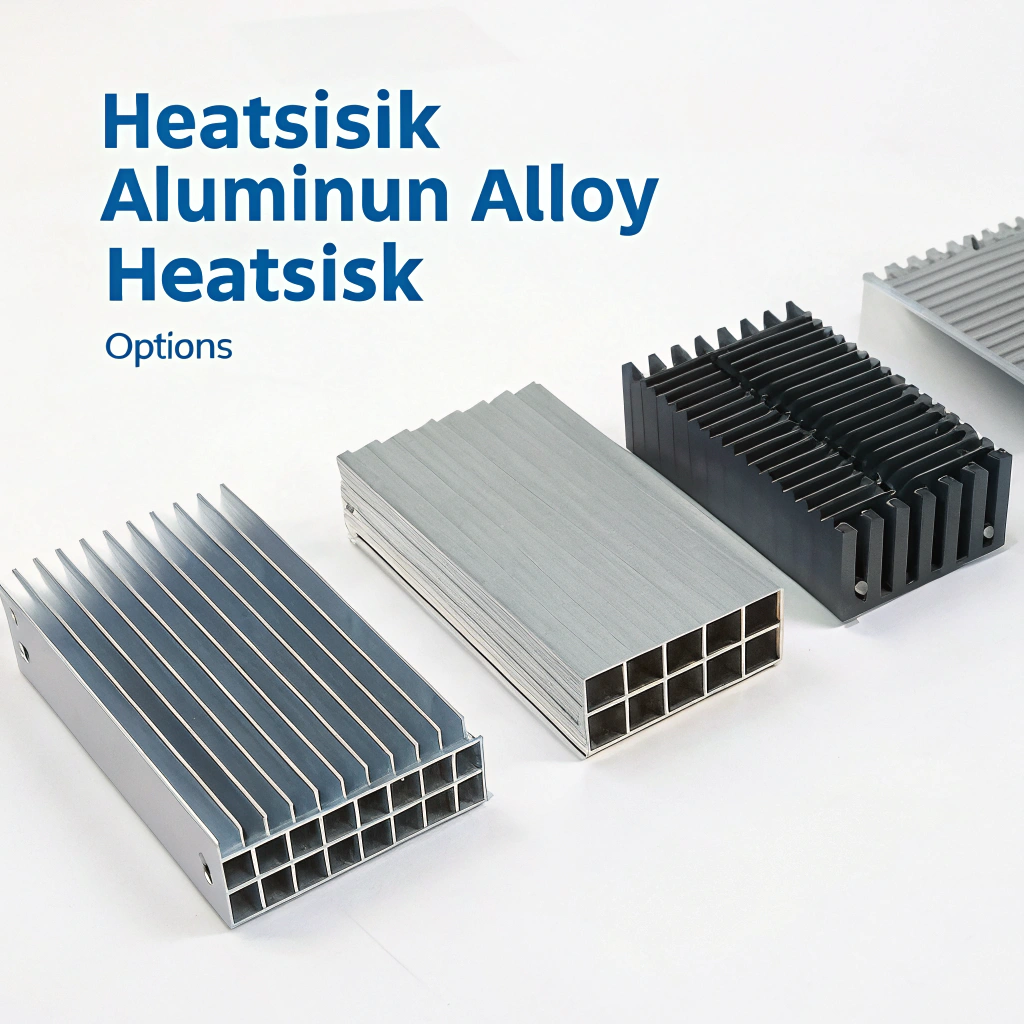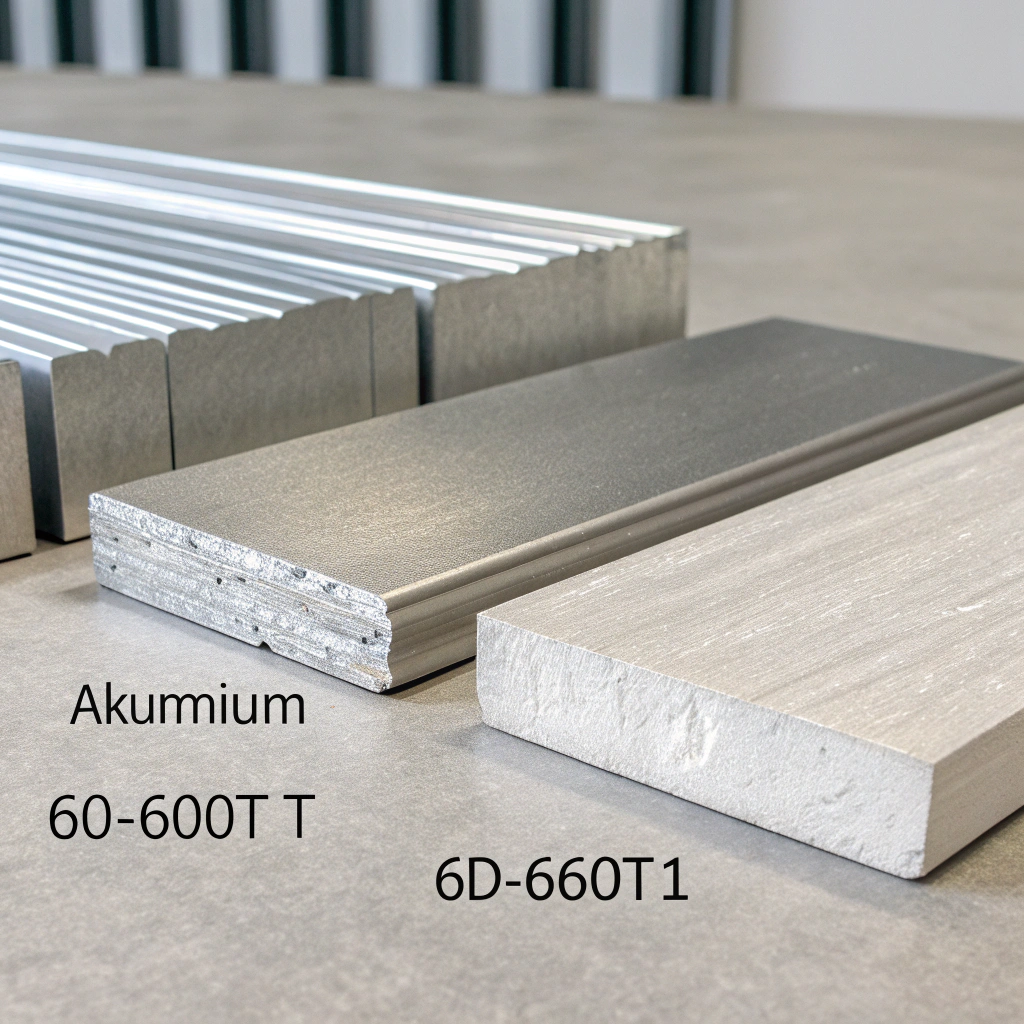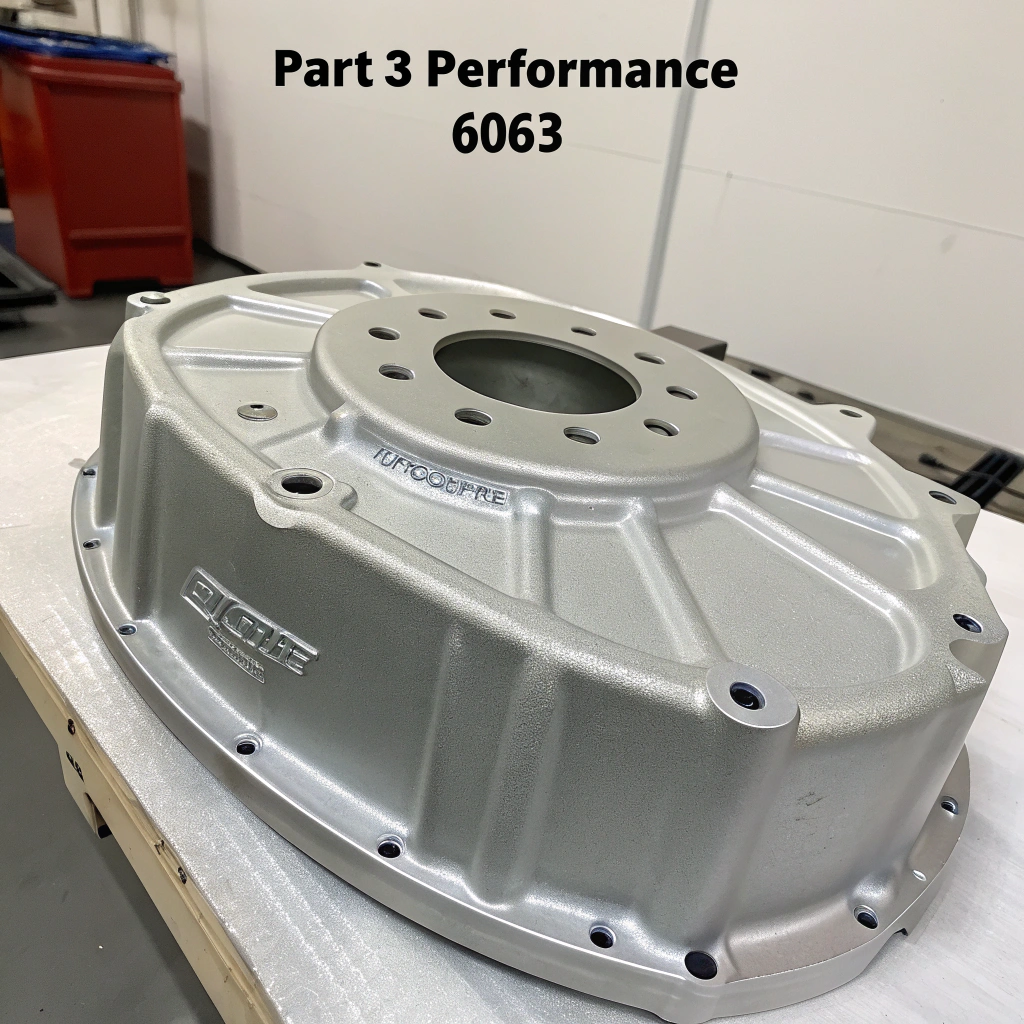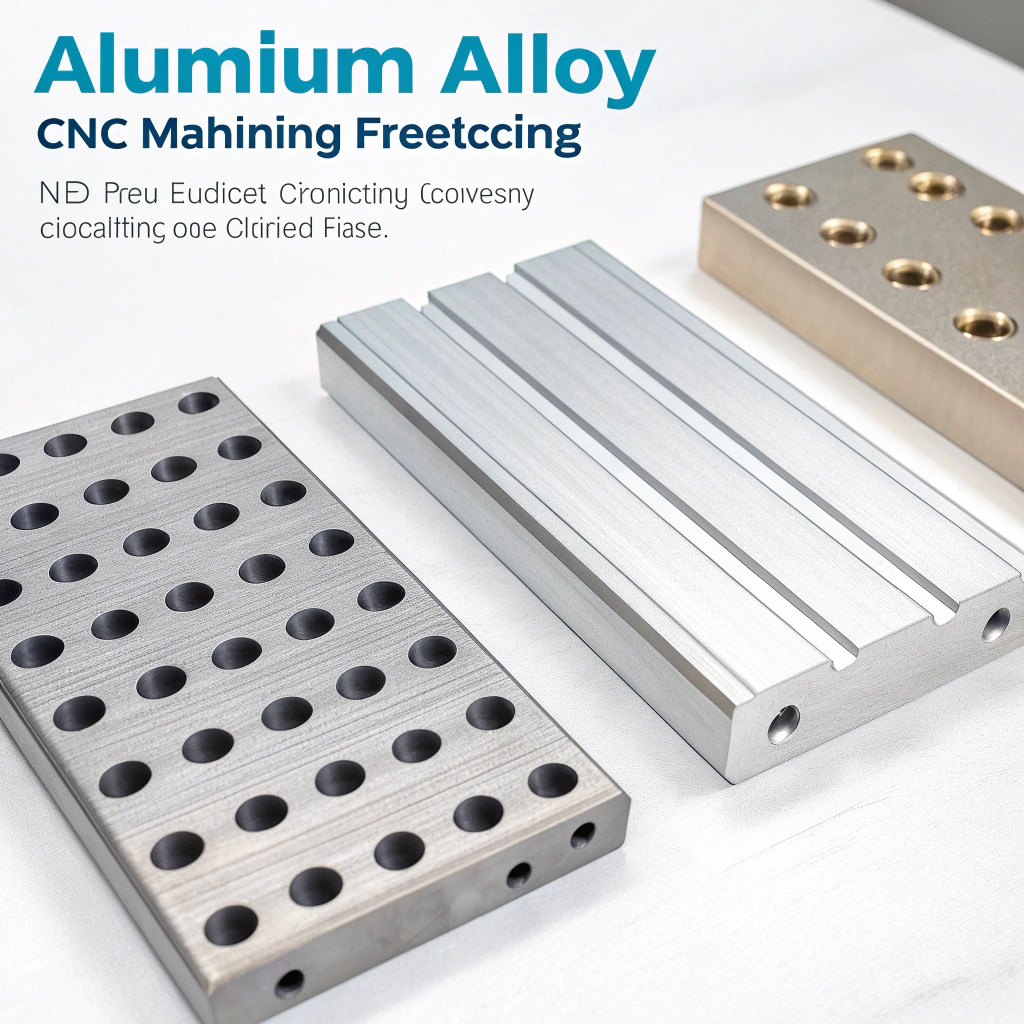Which aluminum alloy is best for heatsinks?
Choosing the right aluminum alloy for heatsinks isn’t just about conductivity—it also affects manufacturing, cost, and surface finish.
6063-T5 is the most common alloy for heatsinks due to its excellent thermal conductivity, extrusion performance, and anodizing quality.
Other alloys like 6061 offer better strength, while 1xxx-series aluminum provides the best conductivity but lower strength. Let’s compare.
Which aluminum alloys can be used for heatsinks?
Aluminum heatsinks are mainly made from alloys in the 1xxx and 6xxx series. Here’s how they compare:
| Alloy Family | Common Grades | Key Features | Notes |
|---|---|---|---|
| 1xxx | 1050, 1100 | Pure aluminum, best thermal conductivity | Low strength, rarely used alone |
| 6xxx | 6063, 6061, 6082, 6060, 6463 | Good conductivity, easy to extrude, stronger | Most widely used for extruded heatsinks |
| 7xxx / custom | 7075 or proprietary blends | High strength, special use | Rare, needs special testing and cost approval |
What to Consider
- Thermal Conductivity: 1xxx > 6063 > 6061
- Strength: 6061 > 6063 > 1xxx
- Extrudability: 6063 is the best
- Finish Quality: 6063 allows excellent anodizing
So in most situations, 6063 is the ideal balance. Only move to 6061 or custom alloys when strength or environment requires it.
The 6063 aluminum alloy is widely used for heatsinks due to its good balance of conductivity and extrusion performance.True
6063 offers good thermal properties, easy extrusion, and excellent anodizing results, making it a popular choice for heatsinks.
1xxx-series aluminum is commonly used in structural heatsinks for high-load environments.False
1xxx aluminum has low strength and is rarely used for structural parts under high mechanical stress.
What’s the difference between 6063-T5 and 6061 for heatsinks?
Both are common alloys, but they serve different roles.
6063-T5 has better thermal conductivity and surface finish, while 6061 provides higher mechanical strength.
Thermal Conductivity
- 6063-T5: ~200 W/m·K
- 6061-T6: ~150–170 W/m·K
That makes 6063 slightly better at conducting heat, which matters for performance.
Strength
- 6061 is stronger than 6063.
- It’s preferred when the heatsink must support loads, resist impact, or bolt tightly to structure.
- 6063 is still strong enough for many light-duty or indoor applications.
Extrusion Performance
- 6063 extrudes better.
- It supports finer fin shapes and more complex cross-sections.
- This matters when designing high-efficiency heatsinks with narrow fins or dense geometries.
Surface Finish
- 6063 delivers cleaner, smoother finishes.
- It’s better for anodizing—less color variation and better appearance.
- 6061 can be anodized but may show streaks or uneven tones.
| Property | 6063-T5 | 6061-T6 |
|---|---|---|
| Conductivity | ~200 W/m·K | ~160 W/m·K |
| Strength | Lower | Higher |
| Extrudability | Excellent | Good |
| Anodizing | Very good | Average |
| CNC Machining | Easy | Slightly harder |
| Cost | Lower | Slightly higher |
6063-T5 aluminum has better extrusion and anodizing characteristics than 6061.True
6063 flows better in extrusion dies and creates smoother surfaces for anodizing, making it preferred for complex heatsinks.
6061 aluminum always has better thermal performance than 6063.False
6063 typically offers higher thermal conductivity than 6061, which benefits heatsink applications.
Can we use custom aluminum grades for extrusion?
Yes—custom aluminum alloys can be developed or sourced to match specialized needs.
Custom alloys can improve conductivity, strength, or corrosion resistance—but they require testing and may increase cost.
When to Consider Custom Alloys
- You need higher thermal performance than 6063 allows.
- You need better corrosion resistance (e.g. marine environments).
- You want a balance of conductivity and high strength.
- You need specific surface finish properties (e.g. colored anodizing).
What to Watch Out For
- Custom alloys must still extrude well.
- The die design may need changes.
- Machining and post-treatment behavior may be different.
- They cost more, and have longer lead times.
For example, companies like HTS-ALU and Lori Thermal support custom alloy requests but often require minimum order quantities and validation steps.
Example Scenarios
| Scenario | Reason to Use Custom Alloy |
|---|---|
| High-frequency electronics | Enhanced conductivity, low magnetic signature |
| Harsh environments | Better corrosion or UV resistance |
| Military/aerospace | Weight-to-strength ratio, compliance |
| Colored or deep anodizing | Alloy composition tailored for uniform dyeing |
If you’re interested in this, we can test a sample batch and validate its behavior before production.
Custom aluminum alloys are sometimes used when standard grades do not meet thermal or structural requirements.True
Special applications may require alloys tailored for higher conductivity, corrosion resistance, or strength.
Custom alloys are usually cheaper than standard 6063.False
Custom alloys tend to be more expensive due to specialized sourcing, testing, and lower production volumes.
Which alloy offers better thermal conductivity?
Conductivity is critical in heatsinks—but it’s not the only factor.
1xxx-series aluminum offers the highest conductivity, but 6063 is the best among practical extrusion alloys.
Thermal Conductivity Comparison
| Alloy | Conductivity (W/m·K) | Notes |
|---|---|---|
| 1050 (1xxx) | ~229 | Excellent, pure aluminum |
| 6063-T5 | ~200 | Good, best in 6xxx family |
| 6061-T6 | ~160 | Moderate |
| 6082 | ~180 | Moderate-high |
| Custom alloys | 180–220 | Varies |
Pure aluminum has less resistance to heat flow, but it’s too soft for most structural heatsinks. That’s why we use 6063—it balances good conductivity and workability.
Factors Affecting Conductivity
- Alloy composition (magnesium, silicon, iron content)
- Grain size and direction
- Extrusion quality
- Age-hardening or temper
- Stress and machining
Even with the same alloy, conductivity can vary by 5–15% based on manufacturing.
Design Matters Too
Don’t rely only on conductivity numbers. A poorly designed 6061 heatsink with short fins may cool worse than a well-shaped 6063 part with taller, optimized fins.
Thermal conductivity varies between alloys and is influenced by composition and processing.True
Alloy type, temper, and grain structure all affect how well heat flows through a metal.
All aluminum alloys have nearly identical thermal conductivity.False
Thermal conductivity can vary significantly between grades—pure aluminum conducts better than alloyed grades like 6061.
Do different alloys affect CNC and surface treatments?
Yes—the choice of aluminum alloy changes how easy it is to machine or finish a heatsink.
6063 machines easier and gives a smoother anodized finish; 6061 is stronger but harder to cut and color.
CNC Machining
- 6063 is softer, easier to cut.
- 6061 is harder—more wear on tools, more effort.
- 6061 requires stronger clamps and deeper cuts.
Anodizing and Surface Finish
- 6063 anodizes beautifully—clear, even finish, good dyeing.
- 6061 can show streaks or uneven tones unless polished.
- Alloys with higher iron or copper may anodize poorly.
| Feature | 6063 | 6061 |
|---|---|---|
| Machinability | Easy | Moderate |
| Tool wear | Low | Higher |
| Anodizing finish | Excellent | Acceptable |
| Surface color | Uniform | May vary |
Other Surface Treatments
- Powder coating: both are compatible.
- Electrophoresis: works best with 6063.
- Hard anodizing: 6061 responds well to hardcoat, with higher durability.
Always test a small batch before committing large production.
6063 aluminum is easier to machine and anodize than 6061.True
Its softer structure and cleaner composition allow smoother machining and more consistent anodizing.
All aluminum alloys respond the same to CNC and anodizing treatments.False
Different compositions affect tool performance and surface finish quality. 6061 may show streaks or color variation in anodizing.
Conclusion
For most heatsinks, 6063-T5 is the best choice—it combines thermal conductivity, easy extrusion, and a great finish. Use 6061 only when strength is a top priority, or consider custom alloys when you need special performance.








